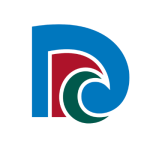Dye to test Waikare Inlet's tidal movements
Anyone noticing a bright red colour in the sea around Opua later this month will have nothing to worry about – it’s a harmless research project.
Weather-permitting, the dye will be released into the sea at Tapu Pt (south of Okiato Pt) on Monday 16 March as part of research designed to smooth the way for oyster farms to resume direct commercial harvesting from the Waikare Inlet.
Jacquie Reed, the Northland Regional Council’s Coastal Monitoring Programme Manager, says about five litres of dye will be released at 7am as part of a joint project between the Council, Northland Health, a consultant and local oyster farmers.
The dye’s progress will be monitored both from the water and a helicopter and samples and aerial photographs will be taken as it moves into the Waikare Inlet.
She says the work is part of a project to have the Waikare Inlet reclassified to allow commercially grown oysters to be harvested directly from marine farms in the lower and middle part of the inlet. Oysters have not been able to be harvested for sale directly from those parts of the inlet since 2001 after a harmful water-borne virus contaminated them.
Investigations suggested there were a number of possible sources for the virus, including leaking septic tanks, sewage discharges from boats, the Kawakawa sewage treatment plant, or a combination of these.
Since then a number of parties have been working to address these issues and due to improvements are now working to have the inlet reclassified as safe for direct harvest.
Among the information staff will be gathering this month will be tidal flows, water temperature, saltiness and muddiness.
While the brightly-coloured dye may look dramatic, especially immediately after release, it’s harmless in the quantities being used.
MORE
Jacquie Reed expects it to be noticeably present over a sizeable area within the Opua Basin and the lower to mid Waikare Inlet for several hours, as well as possibly the lower reaches of the Kawakawa River.
However, she says the dye is a useful tool for researchers because its presence can be detected in very small amounts, even when it’s no longer visible to the naked eye.
The Regional Council carries out a number of similar dye releases around the region annually.
Meanwhile, researchers also plan to release a number of drogues (effectively floating trays) at the same time as the dye releases. These will also be used to track tidal movements in the area.
